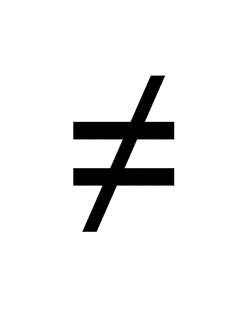


When you choose to analyse your data using a sign test, part of the process involves checking to make sure that the data you want to analyse can actually be analysed using a sign test. However, before we introduce you to this procedure, you need to understand the different assumptions that your data must meet in order for a sign test to give you a valid result.
#DOES NOT EQUAL SIGN IN SPSS HOW TO#
This "quick start" guide shows you how to carry out a sign test using SPSS Statistics, as well as interpret and report the results from this test. You could also use the sign test to determine whether there was a median difference in reaction times under two different lighting conditions (i.e., your dependent variable would be "reaction time", measured in milliseconds, and the two conditions would be testing reaction time in a room using "blue light" and a room using "red light").

However, two different groups of participants are possible as part of a "matched-pairs" study design.įor example, you could use the sign test to understand whether there was a median difference in smokers' daily cigarette consumption before and after a 6-week hypnotherapy programme (i.e., your dependent variable would be "daily cigarette consumption", with the two time points being "before" and "after" the hypnotherapy programme). Most commonly, participants are tested at two time points or under two different conditions on the same continuous dependent variable. The test can be considered as an alternative to the dependent t-test (also called the paired-samples t-test) or Wilcoxon signed-rank test when the distribution of differences between paired observations is neither normal nor symmetrical, respectively. The "paired-samples sign test", typically referred to as just the "sign test", is used to determine whether there is a median difference between paired or matched observations. Sign Test using SPSS Statistics Introduction


 0 kommentar(er)
0 kommentar(er)
